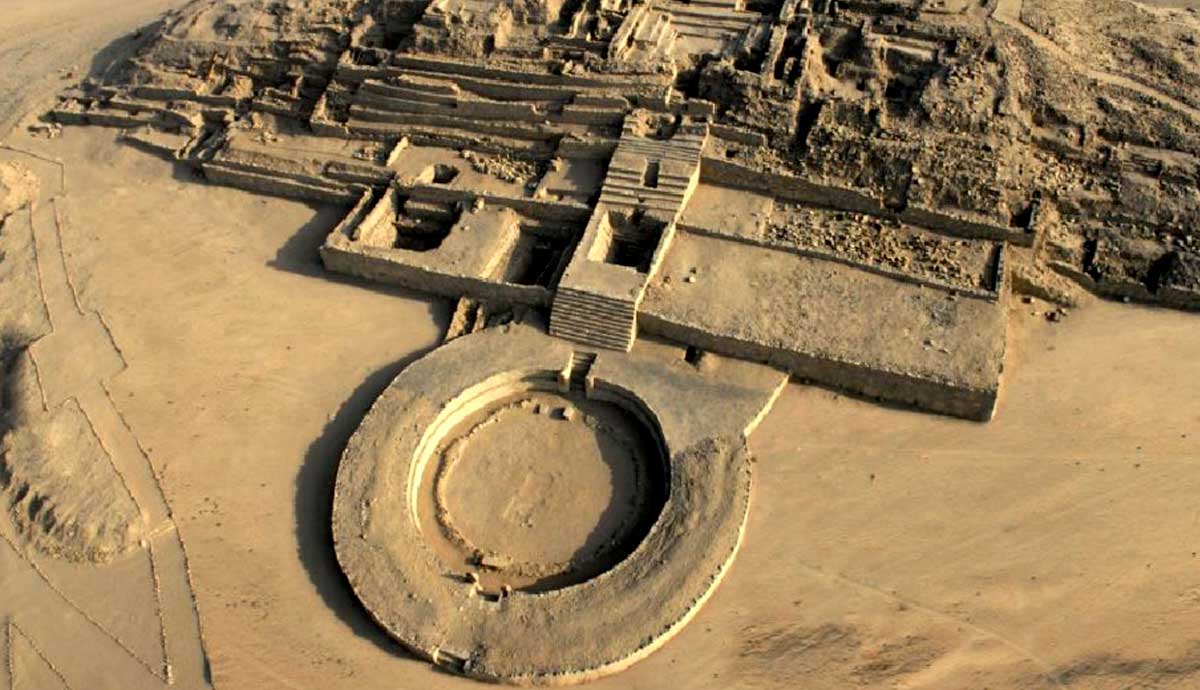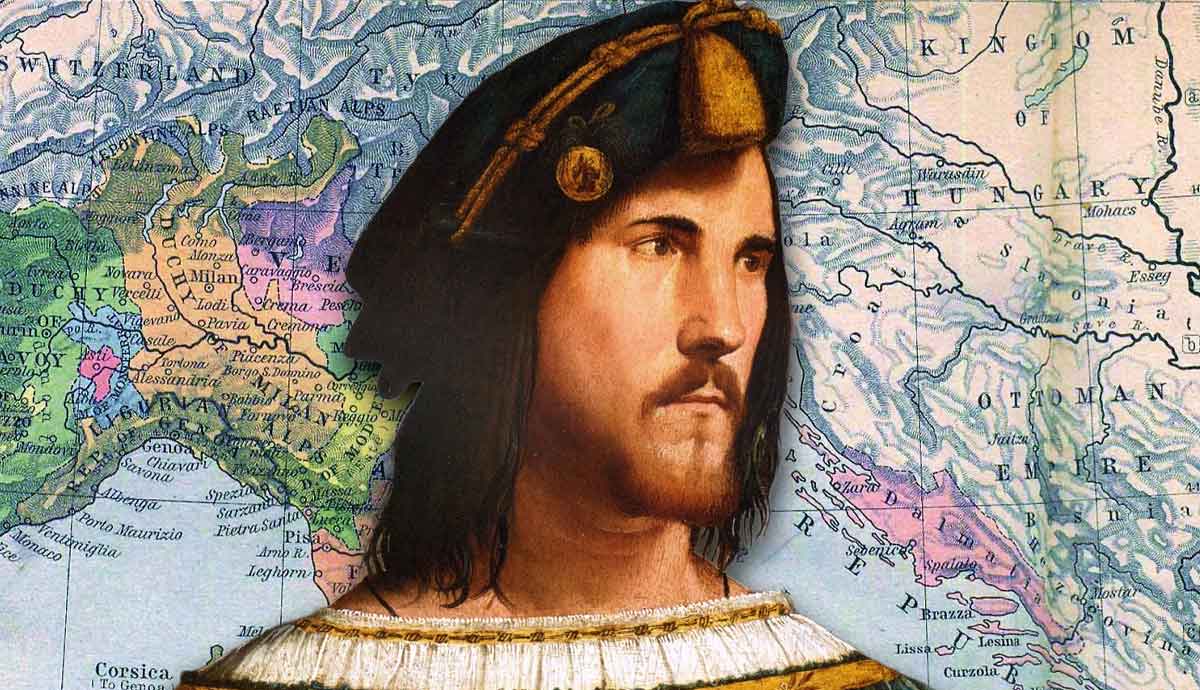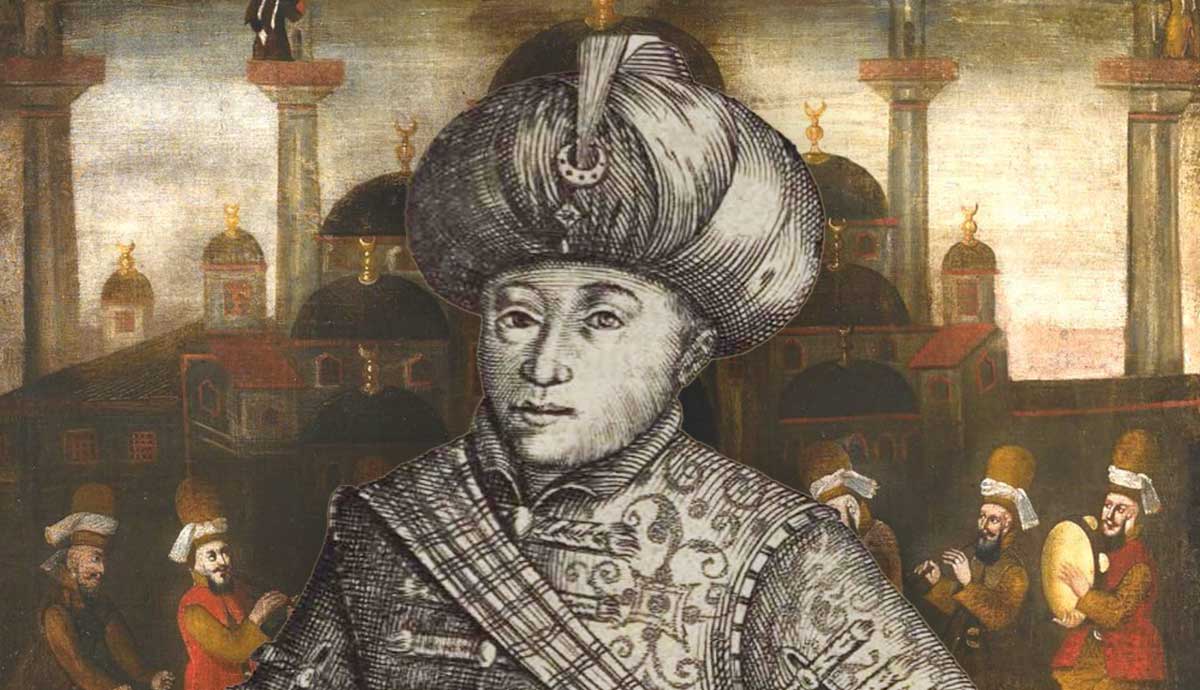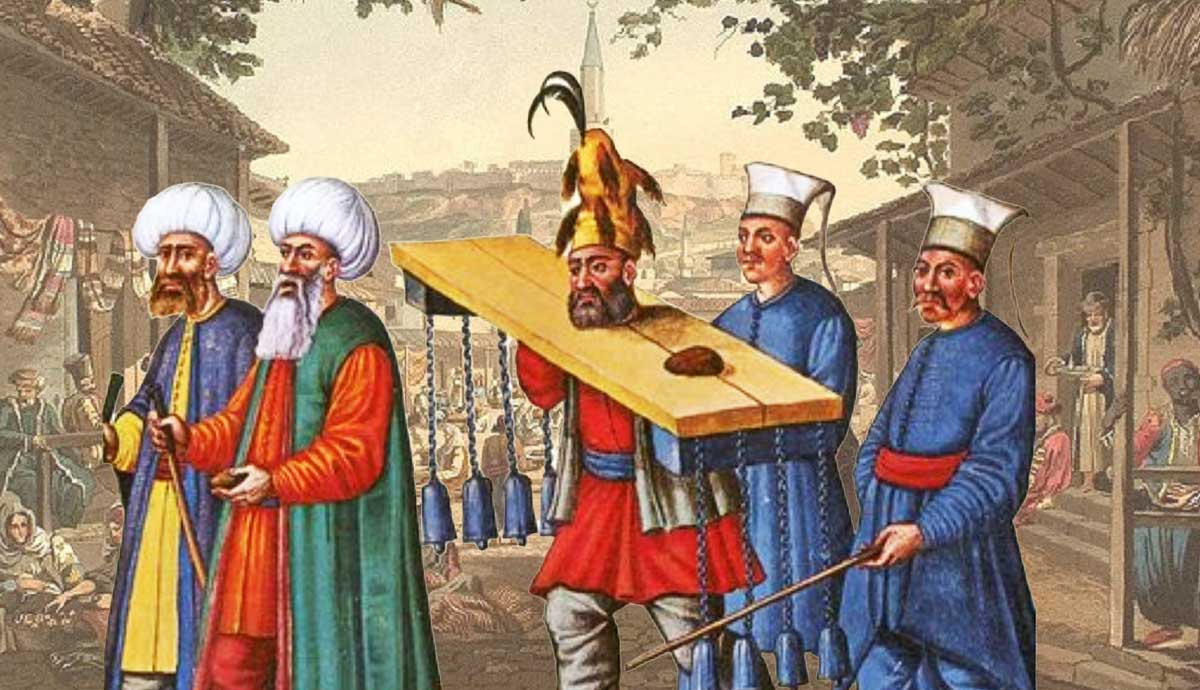
summary
- Cradle of Civilization: The Caral-Supe civilization emerged in Peru around 5,000 years ago, making it the oldest civilization in the Americas.
- Maritime Economy: Unlike other cradle civilizations, which thrived due to agriculture, maritime resources enabled the establishment of the Caral-Supe.
- Early Innovation: They built monumental buildings resistant to earthquakes and used quipu as a non-written form of record keeping.
- Legacy: Droughts led to their decline in 1800 BCE, but as recently as 2015, they were internationally recognized for their sustainable development.
Cradles of civilization are regions where humans developed complex social systems independently. There are six accepted cradles of civilization: Egypt, India, Mesopotamia, China, Olmec, and Caral-Supe. The first societies all formed around agriculture. The Caral-Supe, who emerged on the coast of Peru around 5000 years ago, may have been able to form a civilization thanks to marine resources rather than agriculture. In the 3rd millennium BCE, the Caral-Supe region may have been the most densely populated in the world.
What Is a Civilization?

Anthropologists have various criteria for a group to qualify as a “civilization.” While the term was once used to divide societies perceived as superior to those considered inferior, today, scientists have developed a metric. Generally, civilizations consist of urban, sedentary communities. They produce tools that are utilized to create a surplus of food. This abundance leads to a division of labor, which in turn gives rise to a hierarchical social and political order.
Large-scale agriculture seems to be the logical catalyst for meeting these metrics. Each cradle of civilization rose near a river valley. Egypt on the Nile River, India on the Indus, Mesopotamia between the Tigris and Euphrates, and China on the Yellow River. The other two civilizations began along several small rivers: the Olmec near the Gulf of Mexico and Caral by Peru’s Pacific coast. River valleys provided fertile land for crops and plentiful water. Irrigation permitted large-scale farming, which led to class systems based on labor and ownership. When abundant harvests exceeded basic needs, additional occupations were adopted in growing cities.
The Origins of Caral-Supe

Humans have lived in Peru since approximately 10,000 BCE, ranging from the low coastline to high in the Andes mountains to the east. They began cultivating crops as early as 6000 BCE. Yields were supplemented by hunting and fishing. Food production was sufficient to shift to a sedentary lifestyle. Settlements developed independently across the region, but the north-central portion comprised a nexus of river valleys that facilitated cross-cultural contact. Early inhabitants practiced agriculture, but could an alternate food source create the conditions for an independent civilization to prosper?
The Caral-Supe are not as famous as other pre-Columbian civilizations, as they disappeared long before the time of the conquistadors. Related archaeological sites were first discovered at the start of the 20th century. Extensive documentation of the civilization was only published from the 1990s onwards, led by Peruvian anthropologist Ruth Shady.
Inhospitable Terrain, Plentiful Seas

Peru’s Pacific coastline is dominated by the Sechura desert, one of the driest in the world. Precipitation only falls during seasonal El Niño events. The region is tectonically active, with damage from earthquakes and landslides apparent in some surviving structures. Interspersed throughout the arid climate are over fifty intermittent rivers fed seasonally by snow melting in the Andes. These water sources form small pockets of arable land in an otherwise barren region.
Early inhabitants at Aspero, a fishing village, relied on the Supe River for freshwater. Their diet consisted primarily of marine life from the Pacific. At the mouth of rivers such as this, communities of fishermen formed the first large organized societies on the American continent. The prosperity of fishing villages allowed subsequent inhabitants to move further inland, still trading with the seaside towns.
Peruvian seas are among the most abundant sources of fish in the world. Michael Moseley, the author of Maritime Foundations of Andean Civilization, argued that these rich waters allowed large, sedentary populations to develop refined social structures and architectural marvels. According to Mosely, these hallmarks of civilization arose before irrigation agriculture was implemented.
Urban Engineering and Outside Contact

Caral, often described as the capital city of the civilization, was located on the Supe River just 14 miles from the coast. It gives the civilization its name. Caral was home to an evidently peaceful society, as there were no border walls or weapons. The cityscape suggests a static, planned, and populated urban center. All settlements were situated on non-arable ground to preserve the scarce fertile land for farming. Six pyramids and two round sunken courtyards were the primary features, laid out in a carefully planned style.
Residents lived in adobe and mud homes. These materials were also used extensively to construct monumental spaces such as pyramids and courtyards. The city’s engineering marvels included earthquake-resistant buildings with foundations made of containers of loose stone to minimize shaking and damage. Subsurface ventilation ducts drew in air to maintain fires.

The two recessed circular courtyards were markets that hosted exchanges from a vast territory. Trade networks extended not only between the metropolis and the shore but also as far as Ecuador and the Amazon through overland and riverine routes. Green areas nearby were hunting grounds for deer, and fibrous plant materials could be sourced from wetlands. Coastal people traded seafood for agricultural products, tools, and raw materials.
Caral contains six pyramids, the largest of which, known as the Piramide Major, is the oldest known pyramid in the western hemisphere. Constructed around 2600 BCE, it is contemporary with or slightly older than the Step Pyramid in Egypt, making it one of the oldest pyramids in the world.
Jobs, Science, Culture & Government

Both skilled and unskilled work were essential to the growth of Caral. Masonry was applied to create mounds, terraces, and community spaces. Domestic buildings were also placed onto terraces upon hillsides. The scale of these structures suggests that a system of organized labor was present. Workers may have toiled under duress or been compensated with currency, potentially dried anchovies.
Astronomy, medicine, and the selective breeding of plants were regularly practiced. Artisans produced jewelry, woven garments, and baskets, while engineers managed water resources and construction. Stone figurines and bone flutes point to a culture that valued artistic expression.
Different settlements exercised relative autonomy and practiced separate religions. They were overseen by leaders of sayas, or halves, ruling equal portions of the civilization. The Huno was the central state figure who lived in the capital city and governed all Caral-Supe’s inhabitants. High-ranking individuals and families possessed luxury goods such as symbols made from exotic stone or the remains of rare animals. Social class division is evidenced by the design of living quarters and clusters of these high- and low-status residences.
What Else Made Caral-Supe Different?

Despite fitting the standard criteria for a civilization, the development of Caral was dissimilar to others. They never created ceramics and instead used gourds to transport and store liquids.
No form of writing, as traditionally known, has been uncovered. Instead, knotted textile weaves served as a form of record-keeping. Plant fibers were manipulated to make quipu (or khipu), which disseminated information through color, cordage, and knot locations. The world’s oldest example of quipu was discovered inside a pyramid in Caral. This find may date to 4000 to 4500 BCE, solidifying quipu as one of humanity’s earliest systematic methods of recording information.
Caral diets were also unusual but were rooted in consistent staples. Unlike their contemporaries, Caral’s citizens did not grow grains in abundance. Maize was continually farmed from 6500 BCE, but did not become a significant nutritional source until 800 BCE. Instead, they roasted beans, peppers, avocados, and potatoes. Other cultivated foodstuffs included squash, guava, and domestic animals such as dogs and guinea pigs.
Inhabitants of coastal villages such as Aspero chiefly consumed shellfish, seabirds, anchovies, and sardines. They frequently traded these products with some exceptions. Seaweed and marine mammals were prevalent near the ocean but not inland. Whales were also present, although their meat was likely scavenged from beached carcasses rather than hunted.
Did This Civilization Have Unique Aquatic Origins?

The technologies that enabled the utilization of these marine resources were products of agriculture. Cotton and bast plants were instrumental in producing fibers for fishing lines, twines, and nets. Wood from fruit trees and reeds was used to create watercraft. While humans gathered these plants for millennia, their cultivation coincided with the formation of organized societies. The intensive agriculture of these crops enabled the large-scale manufacture of fishing equipment, which contributed to bountiful food, population increase, and a large urban community.
Remnants of elevated gravity canals have been radiocarbon dated to at least 3500 BCE when Caral-Supe originated, and perhaps as early as 4700 BCE. Collective labor was likely used in their construction, reinforcing social and occupational stratification. This infrastructure is predated by minor irrigation in domestic garden plots, showcasing the prevalence of subsistence farming in early Andean societies.
Aspero continued to serve as a fishing village within the Caral civilization and was the only significant populated area on the coast. Migrations inland took advantage of fertile soil to grow crops necessary for fishing. Settlements were largely self-sufficient, supplemented by these exchanges.

Southern coast residents possessed similarly rich seawaters as those further north, yet lacked freshwater rivers and thus the potential for inland farming. These societies were smaller and less complex, evidenced by their relative absence in the archaeological record. Trade networks across the region, which bred economic and social hierarchies, also aided the transition to civilization in the north.
Facing this evidence, one can safely conclude that intensive agriculture catalyzed the formation of Andean civilization. Locals with more arable land developed irrigation, leading to societal stratification, and trade with coastal regions facilitated the economy. The cultivation of plants enabled higher food yields, providing the impetus for large metropolitan areas to develop.
While it appears unlikely that Andean culture developed solely thanks to marine resources, it is not a question of one or the other. The early marine diet provided by the abundant Pacific Ocean provided a consistent and rich food source that enabled a sedentary lifestyle and agriculture. The evidence suggests a symbiotic relationship where agricultural innovation supported marine exploitation, and vice versa.
Caral-Supe’s Decline and Lasting Legacy

Caral-Supe declined in 1800 BCE during a lengthy drought period. At the same time, people in more arable settings to the north and in the Andes adopted irrigation. These neighboring societies surmounted Caral, and its residents fled the region. Caral’s capital was only occupied twice more, in 1000 BCE and between 900 and 1440 CE. In both instances, settlers only lived on its outer edges. Caral was the first Andean civilization, followed by distinct cultures such as the Nazca and Inca. The next significant population to inhabit Peru, the Chavín, did not arise until 900 BCE.

In 2015, representatives from 124 countries in the International Union of Architects signed the Caral Letter in the capital city. This document highlighted the settlement’s unity with nature as an exemplar of sustainable development. Central planning and seismic-resistant structures were the principal points of interest. The architects emphasized its construction with hand tools to illustrate that incredible goals were achievable.










